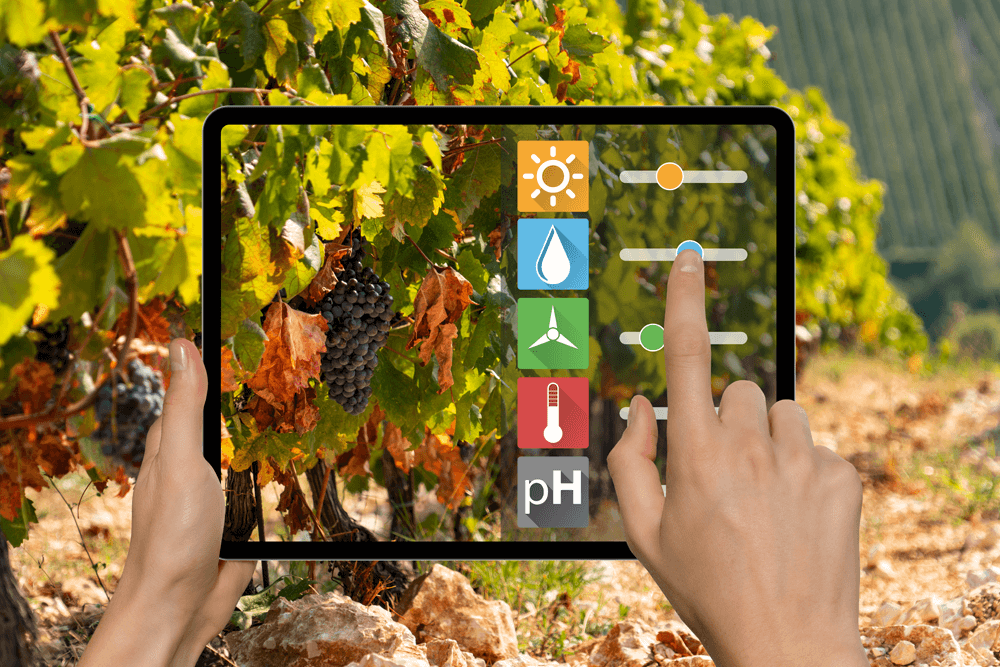Artificial Intelligence (AI) is revolutionizing various industries, and the wine sector is no exception. From vineyard management to wine production, distribution, and tourism, AI offers numerous opportunities to enhance efficiency, quality, and customer experience. This comprehensive article explores the multifaceted applications of AI in the wine industry, highlighting its potential to transform traditional practices and drive innovation.
AI in Vineyard Management
One of the most significant contributions of AI to the wine industry is in vineyard management. Advanced AI-powered tools and technologies are being used to monitor and optimize various aspects of vineyard operations:
- Vineyard Monitoring: AI-driven image analysis tools can scan and assess plant conditions with high precision. These tools detect signs of diseases, pest invasions, or nutritional imbalances, enabling vineyard managers to make timely and informed decisions1.
- Weather Forecasting: AI excels in processing vast amounts of data, making it invaluable for accurate weather forecasting. Predictive models help winemakers prepare for varying climatic conditions, such as droughts or excessive rainfall, which can impact grape quality and yield1.
- Soil Analysis: AI algorithms analyze soil composition and health, providing insights into nutrient levels and moisture content. This information helps optimize irrigation and fertilization practices, ensuring healthy vine growth and improved grape quality1.
Enhancing the Wine Production Process
AI is also making significant strides in the winemaking process, from fermentation to blending and quality control:
- Fermentation Monitoring: AI-powered systems can monitor fermentation conditions in real-time, adjusting parameters such as temperature and humidity to ensure optimal fermentation. This results in greater consistency and superior quality across batches1.
- Blending and Cuvée Creation: AI algorithms can analyze the chemical composition and sensory profiles of different wine batches, suggesting optimal blends and cuvées. This helps winemakers create unique and high-quality wines that cater to consumer preferences1.
- Quality Control: AI-driven sensors and analysis tools can detect flaws or inconsistencies in wine, such as off-flavors or contamination. This ensures that only the best quality wines reach the market1.
AI in Wine Distribution and Logistics
Efficient distribution and logistics are crucial for the wine industry, and AI offers several solutions to streamline these processes:
- Inventory Management: AI systems can predict demand and manage stock levels more accurately, reducing the risk of overstocking or stockouts. This helps wineries optimize their inventory and reduce costs1.
- Supply Chain Optimization: AI can analyze and optimize supply chain operations, from transportation routes to warehouse management. This ensures that wines are delivered to consumers in the best possible condition and at the right time1.
- Predictive Maintenance: AI-powered predictive maintenance tools can monitor equipment and machinery used in wine production and distribution. By predicting potential failures and scheduling maintenance proactively, wineries can minimize downtime and maintain smooth operations1.
AI in Wine Tourism
Wine tourism is an integral part of the wine industry, and AI is enhancing the visitor experience in several ways:
- Personalized Recommendations: AI algorithms analyze visitor preferences and behavior to provide personalized recommendations for wine tours, tastings, and events. This ensures that visitors have a tailored and memorable experience1.
- Virtual Tours: AI-powered virtual reality (VR) and augmented reality (AR) technologies offer immersive virtual tours of vineyards and wineries. This allows potential visitors to explore and learn about the winemaking process from the comfort of their homes1.
- Interactive Experiences: AI-driven chatbots and virtual assistants can provide real-time information and assistance to visitors, enhancing their experience and engagement during wine tours1.
Discovering New Wine Combinations and Innovations
AI is also playing a pivotal role in discovering new wine combinations and driving innovation in the industry:
- Flavor Profiling: AI algorithms can analyze the chemical composition and sensory attributes of different wines, identifying unique flavor profiles and combinations. This helps winemakers experiment with new blends and create innovative wines1.
- Consumer Insights: AI-driven data analysis tools can track and analyze consumer preferences and trends. This information helps wineries develop new products that cater to evolving consumer tastes and preferences1.
- Sustainability Initiatives: AI can optimize various aspects of wine production and distribution to reduce environmental impact. From precision agriculture to energy-efficient logistics, AI-driven solutions contribute to more sustainable practices in the wine industry1.
Case Study: Chateau Bruale’s Use of AI
Chateau Bruale, a renowned winery in Georgia, has embraced AI to enhance its winemaking process and improve product quality. The winery uses AI-powered tools for vineyard monitoring, fermentation control, and quality analysis. This has resulted in more consistent and high-quality wines that have gained international recognition1.
Conclusion
The integration of AI in the wine industry is transforming traditional practices and driving innovation across various aspects of winemaking, distribution, and tourism. From optimizing vineyard management and enhancing the production process to streamlining logistics and creating personalized visitor experiences, AI offers numerous opportunities to improve efficiency, quality, and customer satisfaction. As the wine industry continues to evolve, the adoption of AI-driven solutions will play a crucial role in shaping its future. Cheers to the exciting possibilities that AI brings to the world of wine! 🍷


